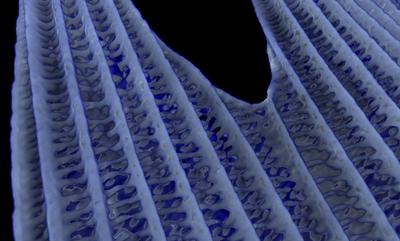
Physicist Pierre Thibault has been awarded a €2.2 million Consolidator Grant from the European Research Council to develop his cutting edge research into X-ray imaging and tomography.
Using advanced methods to combat the current limitations of X-ray imaging, ‘s research could revolutionise what we can see.
Being able to diagnose breast cancer earlier, the ability to read ancient scrolls that were damaged when Vesuvius erupted in 79 AD, and enabling aeroplanes to be fully carbon fibre are just some of the breakthroughs his research could lead to.
Dr Thibault, Associate Professor of Physics, said: “X-rays are hard to focus and hard to manipulate. The techniques I am developing solve this problem by removing the need for lenses or complicated optics. One of them is called ptychography and is a technique that has been in use in X-rays for about 10 years. It’s a method that provides high contrast and high resolution, down to the nanometre scale. I am working on making it more efficient, to take ptychography to the next generation.”
Ptychography enables scientists to see the tiniest details – details that are invisible to the naked eye, such as the scales on a butterfly’s wings. Dr Thibault is combining ptychography with tomography, a technique that turns a 2D image into 3D.
His research will develop new theoretical and experiment tools to look at the nanoscopic structure of carbon fibre to determine fibre orientation. “To know how the fibres are put together is vital, from a safety point of view, when it comes to things like constructing aircraft,” explained Dr Thibault. “You need to know if there are any kinks or waves. Parts of aircrafts are already constructed using carbon fibre, but more powerful characterisation methods could enable the material to be more widely used.”
He also plans to look at fragile heritage documents that cannot be analysed by other methods, such as the papyri scrolls that were damaged by the Vesuvius eruption.
Early tumour detection is also on Dr Thibault’s agenda, specifically for breast cancer. “Breast cancer tumours are difficult to pick up early with mammograms, but the methods we develop could allow medical doctors to detect tumours earlier on,” he said.
His ERC Consolidator Grant is for €2.2 million over five years. He will be employing two post-doctoral researchers and three post-graduates to work on the project, which will start in September 2020.







